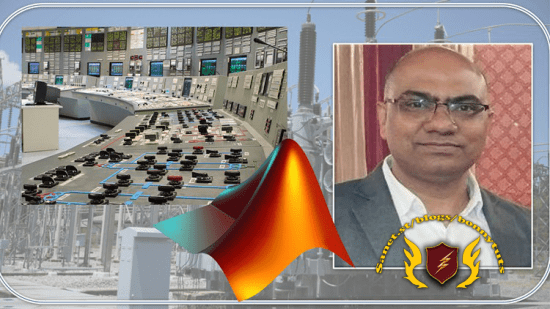
Published 5/2023
Created by Nitin Kumar Saxena
MP4 | Video: h264, 1280×720 | Audio: AAC, 44.1 KHz, 2 Ch
Genre: eLearning | Language: English | Duration: 21 Lectures ( 3h 16m ) | Size: 1.6 GB
MATLAB APP developing concepts
What you’ll learn
Development of Apps for flexible circuit design and study
Complete case study to develop Simulink model for real time core problems
Complete case study to develop MATLAB code to enable Simulink model for app interfacing
Practical exposure to understand Electrical and Electronics concepts
MATLAB APP for Electrical Applications using slider variable
MATLAB APP for Electrical Applications using advance plotting options
MATLAB APP for Electrical Applications using sensors and instrumentations
Requirements
Knowledge of Basic Electrical Engineering for undergraduate course
MATLAB elementary understanding for software installation
MATLAB elementary understanding about command and editor window
MATLAB elementary understanding about Simulink window and library
Knowledge of Basic Mathematics
Description
Importance of MATLAB App in Engineering prospectives::• To educate the real-time engineering applications in virtual mode• To nurture engineers for tackling real-time engineering applications• To establish a bridge between knowledge of codes and core• To ready engineers for virtual investigation of real-time engineering problemsWhat we learn in this course::Introduction1. About MATLAB APP and its structure2. App development for basic calculator3. App development for Kirchhoff current law3.1 Basic theory about KCL3.2 Simulink model development for KCL3.3 App design for KCL verification4. App development for Kirchhoff voltage law4.1 Basic theory about KVL4.2 Simulink model development for KVL4.3 App design for KVL verification5. App development for Superposition theorem5.1 Basic theory about Superposition theorem5.2 Simulink model development for Superposition theorem5.3 App design for Superposition theorem verification6. App development for Thevenin theorem6.1 Basic theory about Thevenin theorem6.2 Simulink model development for Thevenin theorem6.3 App design for Thevenin theorem verification7. App development for Sinusoidal waveform7.1 Basic theory about Sinusoidal waveform7.2 Code development for Sinusoidal waveform representation7.3 App design for Sinusoidal waveform representation8. App development for harmonics issue with sinusoidal supply8.1 Basic theory about harmonics issue with Sinusoidal supply8.2 Code development for harmonics issue with Sinusoidal supply8.3 App design for harmonics issue with Sinusoidal waveform supply9. App development for series RLC resonance concepts9.1 Basic theory about series RLC resonance concepts9.2 Code development for series RLC resonance concepts9.3 App design for series RLC resonance concepts10. App development for power factor improvement concepts10.1 Basic theory about power factor improvement concepts10.2 Simulink model development for power factor improvement concepts10.3 App design for power factor improvement concepts11. App development for three phase induction motor starting and reversing concepts11.1 Basic theory about three phase induction motor starting and reversing concepts11.2 Simulink model development for three phase induction motor starting and reversing concepts11.3 App design for three phase induction motor starting and reversing concepts12. App development for understanding transformer loading and efficiency concepts12.1 Basic theory about understanding transformer loading and efficiency concepts12.2 Simulink model development for transformer loading and efficiency concepts12.3 App design for transformer loading and efficiency concepts13. App development for understanding DC shunt motor speed control concepts13.1 Basic theory about understanding DC shunt motor speed control concepts13.2 Simulink model development for DC shunt motor speed control concepts13.3 App design for DC shunt motor speed control concepts14. App development for understanding half wave, full wave, and bridge rectifier concepts14.1 Basic theory about understanding half wave, full wave, and bridge rectifier concepts14.2 Simulink model development for half wave, full wave, and bridge rectifier concepts14.3 App design for half wave, full wave, and bridge rectifier concepts
Password/解压密码www.tbtos.com
转载请注明:0daytown » MATLAB APP Design for Electrical and Electronics Concepts